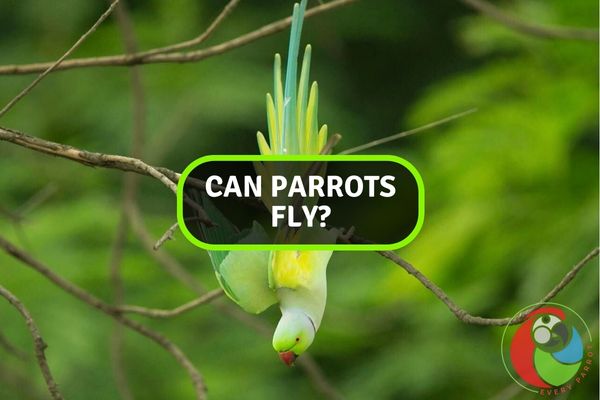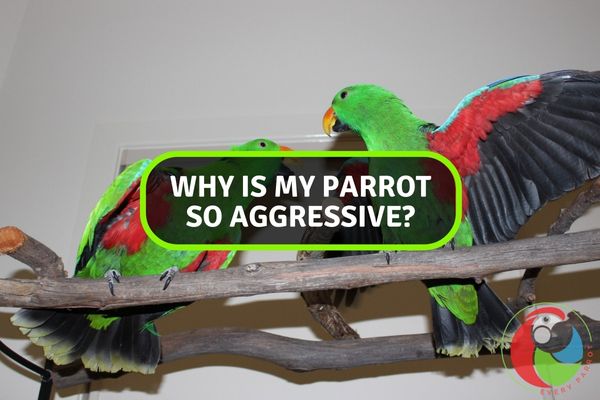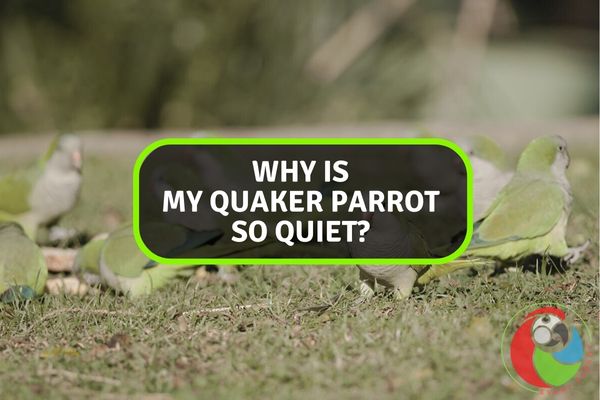Why Are Parrots So Smart?
In the avian world, parrots stand out as remarkably intelligent creatures, captivating both scientists and enthusiasts alike. Renowned for their ability to mimic human speech and solve complex problems, these vibrant birds possess cognitive abilities that continue to astonish researchers.
The key to their exceptional intelligence lies in their highly developed brain structures, particularly the forebrain, which is responsible for advanced cognitive functions. Parrots’ social nature, coupled with their long lifespans, allows for extensive learning and adaptability.
As charismatic companions, they thrive on interaction, demonstrating a keen understanding of language and problem-solving. This unique combination of cognitive prowess and social acumen makes parrots a fascinating subject of study, shedding light on the intricate mechanisms behind their extraordinary intellect.
What Makes Parrots Smart?
Parrots have relatively large brains for their body size, with more neurons packed into their forebrains than most other birds. This gives parrots enhanced cognitive capacities for learning, reasoning, and memory. Studies have shown parrots can not only mimic human speech but also use words meaningfully and creatively in novel combinations.
Some parrot species like African grey parrots have been observed to perform cognitive tasks at levels similar to a 3-4-year-old human child. Parrots demonstrate self-awareness by recognizing themselves in mirrors, an ability seen only in humans, great apes, dolphins, elephants and certain other highly intelligent animals.

Problem-Solving Skills
Parrots frequently exhibit complex problem-solving abilities, especially when motivated by food rewards. In laboratory experiments, parrots have shown an aptitude for puzzles, opening containers to get treats, and using tools in creative ways.
For example, an African grey parrot named Griffin learned to bend wires into shapes to retrieve out-of-reach food items. Wild parrots have also been documented using sticks and other objects as tools to access hard-to-reach nuts and fruit. Their curiosity, persistence and flexible thinking allow parrots to find solutions to novel challenges.
Social Intelligence
Parrots have complex social relationships and communication in the wild. Many parrot species live in large flocks, developing extensive social networks. They have extended parental care of chicks, often involving learning interactions. Parrots are adept vocal mimics, copying sounds in their environment and incorporating them into their social vocabulary.
Pet parrots often bond strongly with their human caretakers. Through this relationship, they pick up words, songs, and behaviors by imitating their owners. Parrots’ social intelligence likely contributes to their abilities to build rapport and learn interactively.
Factors Contributing to Parrot Intelligence
Parrot intelligence is influenced by factors such as social interaction, complex communication skills, and problem-solving abilities. Their adaptable brains and interactive environments contribute to their impressive cognitive capabilities.
Enriched Environments
Parrots benefit cognitively from an enriched living space that provides physical, sensory, and mental stimulation. In the wild, parrots encounter diverse forests and landscapes that present learning opportunities. As pets, they thrive when given room to fly, a variety of perches, interactive toys, and activities. This stimulates neuroplasticity in their developing brains.
Providing parrots swings, ladders, foraging toys and puzzles activates their natural curiosity and problem-solving tendencies. A stimulating environment encourages them to stay mentally and physically engaged. This helps explain why parrots can become more adept learners and exhibitors of intelligence than other caged birds.
Interactive Training and Bonding
Parrots have an immense capacity for building rapport with human caretakers. Through patient positive reinforcement training and consistent bonding time, parrots become highly responsive to their owners. This close relationship motivates them to pay attention, communicate, and learn behaviors more readily than other pets.
With dedicated interactive training, parrots can learn hundreds of words and phrases, recognize objects by name, add or subtract quantities, dance to music and more. The mental exercise of training sessions gives lasting cognitive benefits beyond just the behaviors taught. A strong social bond makes the parrot eager to please their human companion and engage in learning activities together.
Popular Parrot Species Known for Their Smart Behaviors
Certain parrot species stand out for exhibiting especially advanced cognitive abilities and human-like behaviors:
African Grey Parrots
Considered one of the most intelligent birds, African greys are adept mimics that comprehend words and their meanings. They can identify colors, shapes, materials, quantities up to six, and make appropriate choices when presented with these concepts. African greys also show self-awareness by recognizing themselves in mirrors.
Amazon Parrots
Amazons are eager learners that thrive on mental stimulation. They pick up and use language creatively, combine words they know to form new phrases and learn behaviors through positive reinforcement training. Their strong bond motivates them to communicate and play with their owners.
Cockatoos
Extremely social and affectionate, cockatoos delight in human attention and learning new tricks. Their long lifespans allow them to accumulate an impressive vocabulary over time. Cockatoos enjoy puzzles, sorting toys by color or shape, ringing bells and performing dances.
Macaws
Macaws are very playful and investigative. They explore new objects thoroughly and may figure out how to open latches or undo clasps. As pets, macaws entertain themselves shredding wood or cardboard and manipulating toys. Their powerful beaks give them persistent problem-solving abilities.
Budgerigars
Commonly kept as pets, budgies display a chick-like curiosity their whole lives. They pick up words quickly through repetition and enjoy learning small tricks. Budgies amuse themselves with bells, ladders, and other interactive toys that stimulate their nimble minds.
The Role of Communication in Parrot Intelligence
Communication plays a pivotal role in parrot intelligence, as these birds exhibit advanced vocal mimicry and body language. Their ability to convey messages highlights the intricate nature of their social interactions.
Overview of Parrot Communication Abilities
Parrots have a large range of vocalizations used to form complex social interactions in the wild. As pets, their capacity for vocal learning and mimicry demonstrates their social intelligence and ability to communicate cross-species with humans.
Parrots not only mimic words and phrases, but evidence suggests they can attribute meaning to the sounds and use language contextually, not just repetitively. Some studies even indicate parrots may comprehend elements of human grammar, syntax, and word combinations.
Discussion on Mimicry and the Significance of Vocalizations
Mimicry serves an important social function for parrots as they establish bonds and standing within flock hierarchies in nature. The ability to precisely reproduce sounds from their environment also enables mental development.
Interacting with humans through vocal mimicry allows parrots to build rapport with their owners which enhances their intelligence. The brainpower involved in vocal learning goes hand-in-hand with their advanced cognitive capacities in understanding concepts, solving problems and thinking creatively.
Tips for Interacting with and Stimulating Your Parrot
Discover effective ways to engage and stimulate your feathered friend with our insightful tips for interacting with and enhancing the well-being of your beloved parrot.
Providing Mental Stimulation through Toys and Activities
In addition to a roomy cage, give your parrot play areas out of the cage to climb, flap wings and explore. Rotate new toys frequently to pique curiosity. Choose interactive puzzles that require manipulation to earn treats. Provide shredding toys, bells and blocks for hours of amusement.
Engage your parrot daily with short training and play sessions to strengthen your bond and provide mental exercise. Watch for signs of boredom like excessive vocalizations or feather-plucking, and adjust their enrichment activities. A mind that’s engaged in play is developing and staying sharp.
Building a Strong Bond through Positive Interactions
Dedicate consistent time for direct interaction using positive reinforcement. Hand-feed treats as rewards for mimicking words or actions. Use a clicker to mark desired behaviors. Chat, sing and read aloud to your parrot as mental stimulation.
Respond to your parrot’s contact calls to build trust and rapport. Spend time simply observing your parrot – their natural behaviors provide insights to enrich their care. A strong mutual bond will motivate your parrot to communicate and learn.
Training Exercises to Enhance Cognitive Abilities
Target training teaches your parrot to touch designated objects on cue, developing focus and understanding. Advance to identifying colors, shapes, photos or alphabet letters. Simple counting games build math skills. Name household objects as your parrot interacts with them.
Keep training sessions brief, varied and positive to hold attention span. Mix in silly tricks like waving, blowing kisses or dancing for fun bonding. As your parrot masters concepts, challenge them further. Training flexes mental muscles so their intelligence shines through.
Conclusion
The exceptional intelligence of parrots stems from a combination of factors, including their complex social structures, advanced communication skills, and highly developed brains. Their ability to mimic human speech and solve problems reflects a remarkable cognitive capacity. The interplay of genetics, environment, and social interactions contributes to the unique intelligence observed in these vibrant birds.
Understanding the cognitive prowess of parrots not only enhances our appreciation for their fascinating abilities but also underscores the importance of conservation efforts to ensure the preservation of these highly intelligent avian species.








